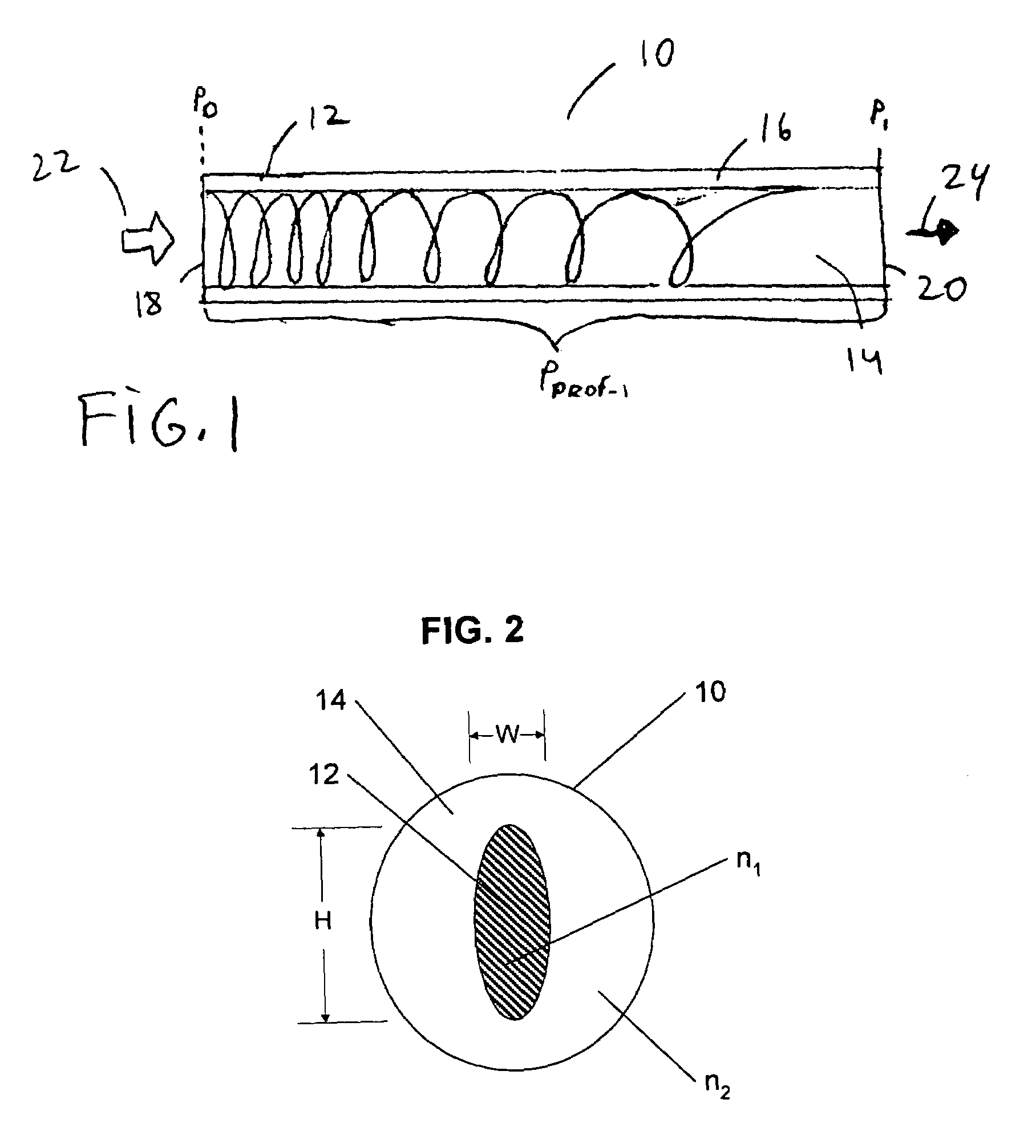Chiral in-fiber polarizer apparatus and method
a polarizer and fiber technology, applied in the field of polarizers, can solve the problems of optical loss and undesirable reflection, relative cost and construction difficulty, potential space and size problems, etc., and achieve the effect of eliminating undesirable polarization components and optimizing the extinction ratio
- Summary
- Abstract
- Description
- Claims
- Application Information
AI Technical Summary
Benefits of technology
Problems solved by technology
Method used
Image
Examples
first embodiment
[0020]In an alternate embodiment of the present invention, the pitch profile is selected and configured such that the inverse value of the chiral structure's pitch at the entry end of the structure is substantially zero, and at a higher value at the exit end. This arrangement is advantageous when it is desirable to filter out a linearly polarized component of the incident light, and it is also desirable to produce an elliptically polarized light component at the exit end.
second embodiment
[0021]In the present invention, the inverse value of the chiral structure's pitch at the entry end is greater than the inverse value of the chiral structure's pitch at the exit end. This arrangement is advantageous when it is desirable to filter out an elliptically polarized component of the incident light, and it is also desirable to produce an elliptically polarized light component at the exit end having a higher eccentricity than the elliptically polarized light components at the entry end.
[0022]In an alternate embodiment of the second embodiment of the present invention, the pitch profile is selected and configured such that the inverse value of the chiral structure's pitch at the exit end is greater than the inverse value of the chiral structure's pitch at the entry end. This arrangement is advantageous when it is desirable to filter out an elliptically polarized component of the incident light, and it is also desirable to produce an elliptically polarized light component at th...
third embodiment
[0023]In the inventive chiral polarizer, the pitch profile is selected and configured such that the inverse value of the chiral structure's pitch is zero at both the entry end the exit ends of the chiral structure. This arrangement is advantageous when it is desirable to filter out a linearly polarized component of the incident light, and it is also desirable to produce a linearly polarized light component at the exit end. In particular, this configuration of the inventive chiral structure can serve to optimize or “clean-up” incident linearly polarized light of one orientation by virtually eliminating the undesirable linearly polarized light component of the other orientation while minimizing the insertion loss of the incident linearly polarized light.
PUM
 Login to View More
Login to View More Abstract
Description
Claims
Application Information
 Login to View More
Login to View More - R&D
- Intellectual Property
- Life Sciences
- Materials
- Tech Scout
- Unparalleled Data Quality
- Higher Quality Content
- 60% Fewer Hallucinations
Browse by: Latest US Patents, China's latest patents, Technical Efficacy Thesaurus, Application Domain, Technology Topic, Popular Technical Reports.
© 2025 PatSnap. All rights reserved.Legal|Privacy policy|Modern Slavery Act Transparency Statement|Sitemap|About US| Contact US: help@patsnap.com



